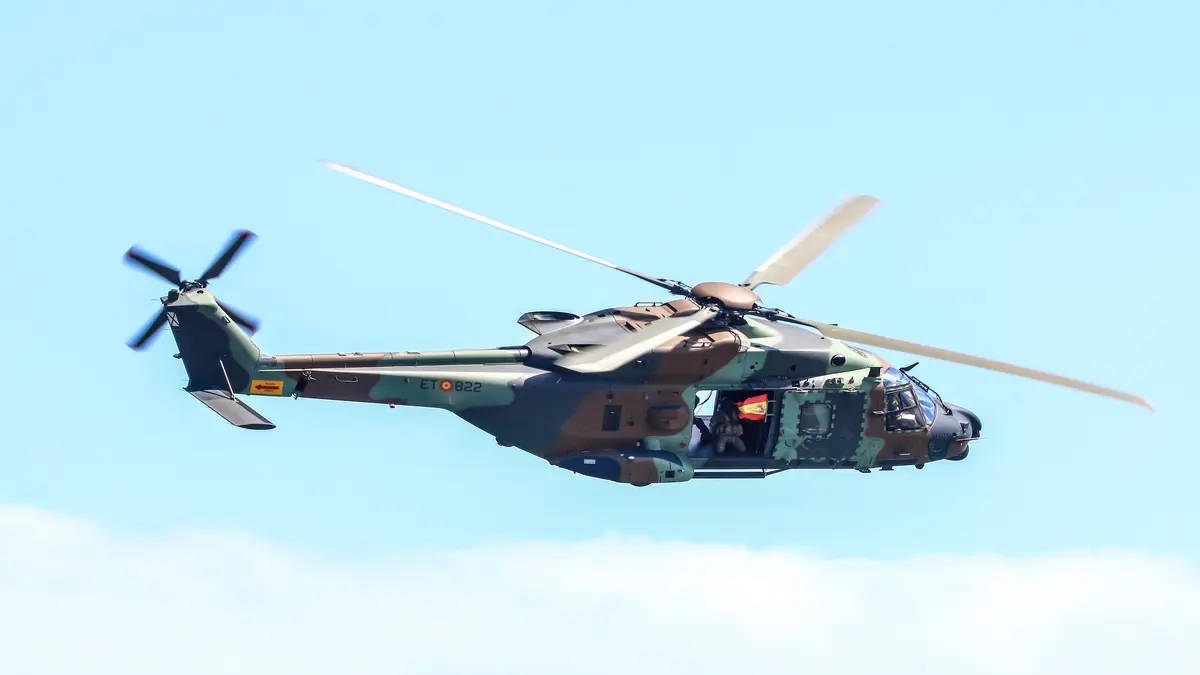“(Madrid — August 12, 2025) – Indra has announced a new fully digital self-protection architecture for fixed and rotary-wing platforms, saying the design can simultaneously scan the entire radar spectrum, detect threats faster and trigger countermeasures more effectively than legacy or hybrid analog/digital systems. The company says the first units for platform integration will be delivered this year, followed by flight testing.
What’s in the Suite
Indra’s package is a modular “building-block” system that operators can tailor by platform and mission set. Key components include:
- ALR-400 full digital radar warning receiver for emitters and radar-guided missile signals.
- InWarner laser-guided threat warning Laser for.
- InShield DIRCM (Directed Infrared Countermeasures) to blind IR-guided missiles from ground or air launch.
- Integration with standard costs (Chaff/Flare Dispensers) for surface-to-air combat.
Indra notes that the suite is designed to scale across fighter, transport, and helicopter fleets and plug into existing countermeasure dispensers and mission systems. The company points to previous integration experience on F/A-18, A400M, C295, NH90, and Tiger and its role in Eurofighter self-protection development.

- Indra’s InShield laser-based Directed Infrared Countermeasure (DIRCM) is a system that protects aircraft against IR-guided missiles. After detecting an incoming threat, it emits a laser beam to disrupt the missile’s guidance. The autonomous system can be deployed as a standalone solution or integrated into a new or existing electronic warfare self-protection suite. (Indra System)
Why “Full Digital” Matters
According to Indra, moving to a fully digital – rather than fielding hybrid analog/digital receivers – enables simultaneous, wide-band spectral coverage and rapid correlation of the complex signal environment. That, in turn, gains valuable seconds for pilot warning, automated response, and countermeasure sequences against both sophisticated integrated air defense and asymmetric threats such as MANPADS.
Near-term rollout and European Reference
The company has completed the design** and built initial units for integration laboratories, the delivery of which is scheduled for this year as a precursor to flight tests. Indra frames the program as a program to advance European tactical autonomy in airborne electronic warfare by fielding a locally-operated, exportable digital standard.
A recent trade report highlights the suite’s objectives – short detection timelines, rapid response and full-spectrum sensing – and its modularity for a variety of air weapons.
- Indra InShield DIRCM system installed on a Spanish Air Force Airbus A400M transport aircraft. As shown, the integration of three DIRCM units provides a nearly 360-degree view of missile threats, enabling coverage
Opportunities and Risks: Initial Assessment
Indra’s approach is aligned with a broader shift towards software-defined EW, where capability enhancements come through firmware and algorithm updates rather than major hardware swaps. If validated in flight, the suite could give European and allied fleets a common digital baseline to integrate DIRCM and expendables, potentially facilitating sustainability across mixed aircraft types.
However, success will depend on:
- qualification and certification across multiple aircraft (EMI/EMC, safety and flight clearance).
- integration complexity with legacy mission computers and dispensers.
- lifetime agility, i.e., rapid threat-library and software updates to keep pace with evolving detectors and emitters.
Bottom Line
Indra’s Fully Digital Self-Defense The suite presents a credible push to shorten the detect-decide-defeat timeline against modern missiles, giving operators a modular path to upgrade legacy fleets. The real test now moves from the press room to the integration lab – and soon to the flight line – where the promise of rapid warning and smart countermeasures will be measured in milliseconds.”
FAQs
Indra’s system is a new digital defense package for aircraft and helicopters. It scans the entire radar spectrum, quickly detects threats, and triggers countermeasures such as chaff, flares, and laser-guided systems more efficiently than older analog or hybrid systems. The suite can be customized for fighter jets, transport planes, and helicopters, making it a flexible solution for modern air defense.
The InShield DIRCM system uses a laser to counter infrared-guided missiles. When a threat is detected, it automatically emits a laser beam to confuse the missile’s guidance system. This reduces the missile’s chance of hitting its target and can be integrated with existing countermeasure dispensers or used as a standalone system.
A fully digital system covers a wider radar spectrum at once and processes signals faster. This gives pilots extra seconds to react and allows automeasures to work faster. It also makes it easier to update digital systems with software or algorithm upgrades, keeping the aircraft ready for new missile types and threats.
Indra has already built initial units for integration and plans flight tests later this year. The system is designed to be modular, allowing for updates for new aircraft or mission requirements. Its development is in line with the trend towards software-defined electronic warfare, which is gaining attention in Europe and globally.








Leave a Reply